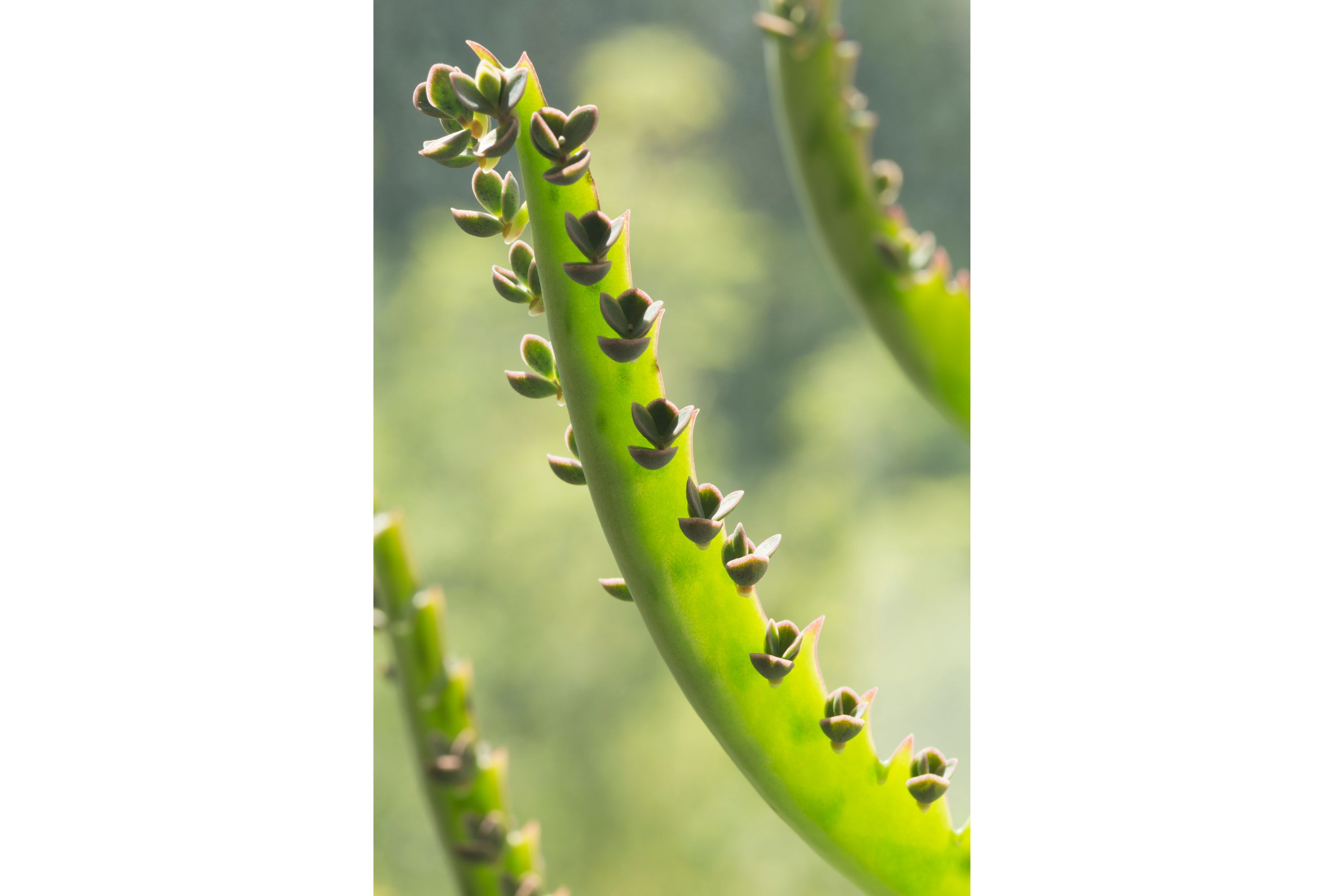Devil's backbone
(Kalanchoe daigremontiana)

Description
Kalanchoe daigremontiana is a succulent plant that is native to Madagascar. It is also known by the common names of mother of thousands, alligator plant, devil's backbone, or chandelier plant. This plant is known for its ability to produce tiny plantlets along the edges of its leaves, which can easily take root and grow into new plants. In this article, we will take an in-depth look at the Kalanchoe daigremontiana plant, including its physical characteristics, habitat, cultivation, and uses. Physical Characteristics: Kalanchoe daigremontiana is a small, shrub-like plant that can reach a height of 1-2 feet. The leaves of the plant are thick and fleshy, with a grey-green color and purple spots on the edges. The edges of the leaves are serrated, and each serration can produce tiny plantlets. The plant produces clusters of small, tubular flowers that are pink, red, or orange in color. The flowers bloom in the winter and early spring months. Habitat: Kalanchoe daigremontiana is native to Madagascar, where it grows in rocky areas, on cliffs, and in dry forests. The plant prefers well-draining soil and can tolerate periods of drought. In its natural habitat, the plant is a common sight in rocky crevices and on the sides of cliffs. Cultivation: Kalanchoe daigremontiana is a popular houseplant due to its unique growth habit and ease of propagation. The plant can be grown indoors or outdoors, as long as it receives adequate sunlight and well-draining soil. The plant prefers bright, indirect sunlight but can tolerate some direct sunlight. It is important to avoid overwatering the plant, as it is susceptible to root rot. Propagation: One of the most unique features of Kalanchoe daigremontiana is its ability to produce tiny plantlets along the edges of its leaves. These plantlets can be easily propagated by planting them in well-draining soil. To propagate the plantlets, gently remove them from the edge of the leaf and plant them in a small pot with well-draining soil. Water the plantlet sparingly until it establishes roots. Uses: Kalanchoe daigremontiana has a number of uses, both medicinal and ornamental. In traditional medicine, the plant has been used to treat a variety of ailments, including inflammation, pain, and fever. The plant is also believed to have diuretic and antidiabetic properties. As an ornamental plant, Kalanchoe daigremontiana is popular due to its unique growth habit and ease of propagation. The plant can be grown indoors or outdoors and makes an excellent addition to a rock garden or succulent collection. Conclusion: Kalanchoe daigremontiana is a unique and interesting plant that is popular among plant enthusiasts and collectors. The plant's ability to produce tiny plantlets along the edges of its leaves makes it easy to propagate and cultivate. Whether grown as a medicinal plant or as an ornamental addition to a garden or collection, Kalanchoe daigremontiana is a fascinating plant with a lot to offer.
Taxonomic tree:







